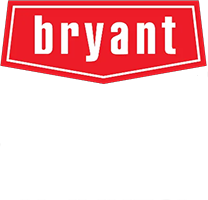Hey there, Caldwell neighbors! Let’s talk about something near and dear to every homeowner’s heart (and wallet, let’s be honest): keeping our homes comfortable year-round. After more than a decade writing about home comfort systems, I’ve seen it all – the good, the bad, and the systems that probably should have been retired during the Reagan administration. Here in Caldwell, we know our weather likes to keep us on our toes. Blazing summer afternoons give way to crisp, cold winter nights, sometimes faster than we’d like. That’s where your HVAC system comes in – or maybe, where it *should* be coming in strong.
Getting a new heating, ventilation, and air conditioning (HVAC) system installed is a big decision. It’s not just about swapping out an old box; it’s about investing in your home’s comfort, efficiency, and even its value. But where do you start? What even *is* HVAC installation, beyond the obvious? Stick with me, and we’ll walk through everything you need to know, from picking the right unit for our unique Idaho climate to making sure it runs smoothly for years to come. No jargon-filled headaches, I promise – just practical advice from someone who’s seen firsthand what works and what definitely doesn’t.
Understanding HVAC Installation and Its Benefits
Okay, let’s break it down. HVAC installation is essentially the process of putting in a new system designed to control your home’s temperature, humidity, and air quality. This isn’t just yanking out an old furnace and plugging in a new one (though sometimes I wish it were that simple!). It involves careful planning, precise connections, and rigorous testing to ensure everything works together seamlessly. Think of it as the heart transplant for your home’s comfort – it needs to be done right.
Why go through the trouble? The benefits are pretty compelling. First off, modern HVAC systems are miles ahead in energy efficiency compared to older units. We’re talking potentially lower utility bills, which always feels good, right? You’ll also experience more consistent indoor temperatures. No more needing a sweater in the living room while the bedroom feels like a sauna. And let’s not forget enhanced air quality. A properly installed system with good filtration can significantly reduce dust, pollen, and other airborne irritants – a big plus, especially during allergy season or those hazy inversion days we sometimes get in the Treasure Valley.
Here’s something crucial many folks overlook: professional HVAC installation safeguards your investment. Most manufacturers’ warranties are contingent on installation by a licensed professional. Cutting corners here could void your warranty, leaving you on the hook for expensive repairs down the road. Plus, a pro ensures the system is installed according to manufacturer specifications and local codes, maximizing its lifespan and preventing premature breakdowns. It’s peace of mind, plain and simple.
Now, let’s talk about Caldwell’s climate. We get those hot, dry summers pushing well into the 90s (and sometimes higher!), followed by winters where temperatures regularly dip below freezing. This swing means your HVAC system works hard. Expert installation ensures your system is correctly sized and calibrated specifically for these demands. An improperly installed unit might struggle to keep up on extreme days, run inefficiently, or wear out faster. Getting it right from the start is key to staying comfortable without breaking the bank, season after season.
Choosing the Right HVAC System for Your Caldwell Home
Alright, so you’re ready for an upgrade. How do you pick the *right* system? It starts with a proper assessment of your home. A reputable technician won’t just glance at your square footage. They’ll consider the layout, the quality of your insulation (or lack thereof!), window types and placement, and even the direction your house faces. All these factors influence how much heating and cooling power you actually need. Getting the size right – not too big, not too small – is absolutely critical for efficiency and comfort.
Next up is comparing system types. You’ve got options!
- Central Air Conditioners & Furnaces: The traditional setup for many homes, using ductwork to distribute cooled or heated air. Gas furnaces are common here for reliable winter heating.
- Heat Pumps: These are fantastic dual-purpose systems that provide both heating and cooling. They work by transferring heat rather than generating it, making them very efficient, especially in milder temperatures. Modern heat pumps handle colder weather much better than older models, making them a viable option for Caldwell’s winters, often paired with a backup heat source.
- Ductless Mini-Splits: Perfect for homes without existing ductwork, additions, or for zoning specific areas. They consist of an outdoor unit connected to one or more indoor heads, offering flexible temperature control.
Each has its pros and cons depending on your home’s specifics and your budget.
Let’s talk alphabet soup: SEER and AFUE. SEER (Seasonal Energy Efficiency Ratio) or the newer SEER2 rating measures cooling efficiency – the higher the number, the less electricity it uses. AFUE (Annual Fuel Utilization Efficiency) measures furnace heating efficiency – higher percentages mean more fuel converts to heat. Investing in higher efficiency units costs more upfront but yields long-term savings on your energy bills. As of 2025, keep an eye on current federal minimum standards and ENERGY STAR recommendations – they tend to nudge upwards, pushing for better efficiency across the board. Ask potential installers about potential rebates or tax credits too; sometimes state or federal programs pop up that can ease the cost.
Finally, and this is arguably the most important step: vetting your contractor. Don’t just go with the first name you find! Ensure they are licensed (Idaho requires HVAC contractors to be licensed) and insured (this protects you!). Ask for references from recent installations in the Caldwell area if possible. Check online reviews, but take them with a grain of salt – look for patterns. Understand the warranties offered – typically there’s a manufacturer warranty on parts and a separate labor warranty from the installer. A trustworthy contractor will be transparent about all of this.
Preparing Your Home for HVAC Installation
So, you’ve chosen your system and your contractor. Installation day is approaching! What can you do to make things go smoothly? A little preparation goes a long way. Clear a path for the technicians to the indoor and outdoor unit locations. Move any furniture, rugs, or valuable items away from the work areas (attic access, furnace closet, outdoor pad site). If you have pets or young children, plan to keep them safely secured away from the work zones. It’s just safer and less stressful for everyone involved.
Don’t forget the paperwork! In most cases, replacing an HVAC system requires permits from the City of Caldwell. A reputable contractor will handle the permit application process for you. This isn’t just red tape; it ensures the installation meets local building codes and safety standards. Compliance is key for safety, proper system function, and even your homeowner’s insurance. Make sure your contractor confirms the permits are secured before work begins.
Wondering what the actual installation process looks like? It generally follows these steps: First, a final site check. If replacing an old system, they’ll safely remove and dispose of it. Then comes any necessary ductwork modifications – maybe sealing leaks or adjusting connections. After that, they’ll carefully set the new equipment (indoor air handler/furnace, outdoor condenser/heat pump). Next involves connecting refrigerant lines, electrical wiring, and drainage. Finally, they install the thermostat and perform initial system testing. It’s a meticulous process when done right!
What should you expect during the installation? Most standard replacements take a full day, sometimes stretching into a second day depending on complexity. Expect some noise – drilling, moving equipment, etc. Your contractor should communicate the expected timeline and keep you updated on progress. They should also take care to protect your home, using drop cloths and cleaning up the work area. Maintaining a safe work environment is paramount, so respect their space and let them focus on doing the job correctly.
Maximizing System Performance with Post-Installation Care
The technicians are packing up, your new system is humming away – job done, right? Almost! The initial system startup is more than just flipping the breaker. The installation team performs crucial checks, testing heating and cooling cycles, measuring refrigerant levels (critical for performance and efficiency!), checking airflow, and calibrating the controls and thermostat. They should walk you through the basic operation and any new thermostat features before they leave.
Now, it’s partly up to you to keep it running beautifully. Routine maintenance is non-negotiable if you want efficiency and longevity. The absolute number one task? Changing or cleaning your air filter regularly. Seriously, set a reminder. Depending on your filter type and home environment (pets, dust levels), this could be monthly or every few months. Also, keep outdoor units clear of debris (leaves, grass clippings) and ensure indoor vents aren’t blocked by furniture or rugs. Simple stuff makes a huge difference.
Learn to recognize early warning signs that something might be amiss. Strange noises (grinding, banging, squealing), odd smells (burning, musty), reduced airflow, inaccurate temperatures, or a sudden spike in your energy bills are all clues. Don’t ignore them! Addressing minor issues early can prevent major, costly breakdowns. When in doubt, call a professional. Trying DIY repairs on complex HVAC systems can often lead to bigger problems or even safety hazards.
Consider enrolling in a maintenance plan offered by your HVAC company. These plans typically include annual or semi-annual tune-ups where a technician inspects, cleans, and tunes your system for optimal performance. Benefits often include priority service if you do have an issue (especially helpful during peak season!), potential discounts on repairs, and the peace of mind knowing your system is being professionally cared for. It’s preventative medicine for your HVAC.
Finally, think about enhancing your indoor air quality (IAQ) beyond just the standard filter. Especially here in Idaho with our dry air, particularly in winter, a whole-house humidifier can make a world of difference for comfort and health. Conversely, if summer humidity becomes an issue, a dehumidifier might be beneficial. High-efficiency air purifiers or UV lights can further reduce airborne contaminants like bacteria, viruses, and mold spores. Proper ventilation is also key – ensuring some fresh air exchange without compromising efficiency. Discuss these options with your HVAC pro post-installation to tailor solutions to your home’s specific needs.
Whew! That was a lot, I know. But investing in a new HVAC system is a significant step, and being informed helps you make the best choices for your Caldwell home. From understanding the efficiency ratings to knowing what to expect on installation day and how to care for your system afterward, you’re much better equipped. Remember, a well-chosen, professionally installed, and properly maintained HVAC system is the key to year-round comfort in our dynamic Idaho climate.
Now I want to hear from you! What’s been your biggest challenge with heating or cooling your home in Caldwell? Or maybe you have a question I didn’t cover? Drop a comment below – let’s chat about keeping our homes comfortable!

